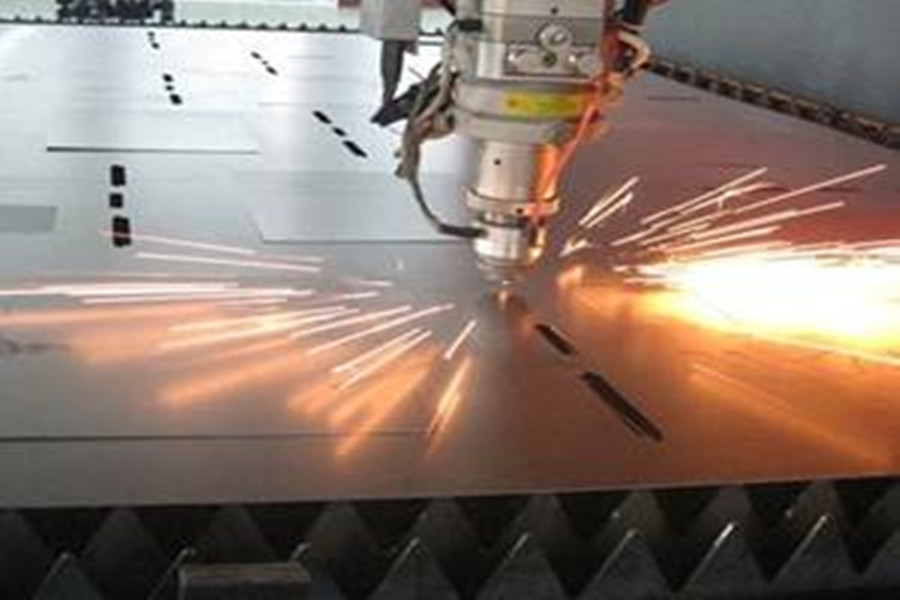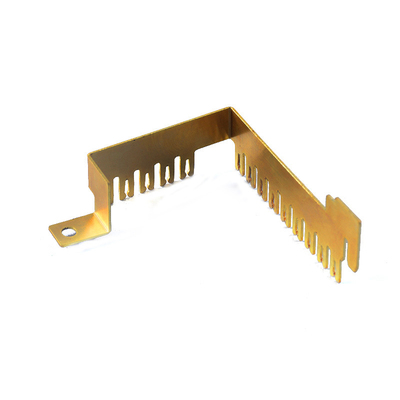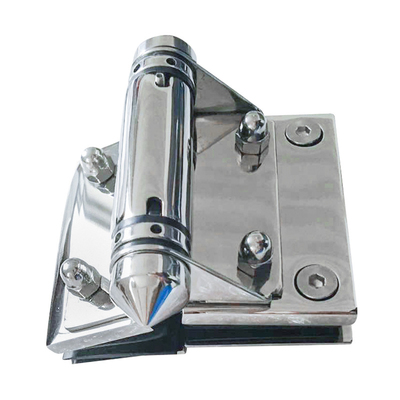The new CO2 laser beam cutting technology is more suitable for cutting hard or brittle materials!
Laser beam cutting is a non-contact, flexible production and high-productivity technology that can accurately analyze a wide range of sheet materials. For these and further benefits, laser processing is increasingly being adopted by industry.
This paper studies the influence of material type, workpiece thickness, cutting speed and auxiliary gas pressure on cutting quality, and uses CO2 laser for industrial related applications. Select AlMg3 aluminum alloy, St37-2 low carbon steel and AISI 304 stainless steel as the most mature materials in many industrial fields, and have an in-depth understanding of the absorption behavior of different processes (ie, inertial assisted fusion cutting and oxygen cutting) and CO2 laser wavelength. The purpose is to strengthen the understanding of the mechanism of the interaction between laser cutting parameters and workpiece parameters to determine general standards and optimized process parameters to ensure the quality of the cut.

Researchers analyzed the quality of laser cutting from three aspects: cutting seam geometry, surface roughness and cutting edge quality. The experiment was carried out using a systematic experimental design method based on experimental design, and the results were verified by analysis of variance. The quality evaluation was proposed and discussed. Visual inspection of the cut part confirms good overall quality and limited existence of laser cutting defects. Experimental studies have shown that different materials can be successfully processed within a larger range of test values. In addition, the researchers determined for each material the best cutting conditions that meet the straight-line requirements of the adopted quality standards.
Experimental background
Laser cutting (LBC) is currently the most widely used process for cutting different sheet materials in the industry. Laser processing can cut a very large range of materials, covering almost all categories (metals, composites and ceramics). This characteristic is due to the fact that the thermal characteristics of the laser process depend on the thermal behavior of the material, rather than its mechanical properties. The heat energy is provided by the laser beam and converted into heat energy. The laser beam can be focused on a very small point on the surface of the material. Due to the electromagnetic radiation, it does not involve mechanical cutting force, tool wear and vibration. Therefore, LBC is also suitable for cutting hard or brittle materials.
The laser beam interacts with the electrons of the material, and part of the energy is absorbed, resulting in a highly localized temperature rise until it melts, vaporizes, or changes its chemical state. These different physical phenomena that control the laser-material interaction mainly depend on the chemical and physical properties of the material, such as the absorptivity, thermal conductivity, and laser characteristics such as the wavelength and power density of the laser. Melt cutting is by far the most commonly used metal cutting method, while vaporization cutting is usually used for materials with low vaporization energy and high irradiance lasers. The chemical state changes and cuts to replace some organic materials, when the temperature rise causes the chemical bonds between the molecules to break. During the melting and cutting process, the molten material is removed from the groove by the pressurized gas assisted jet. Depending on the material being cut, the auxiliary gas can be inert or active. The first protects the surface from oxidation, while the second (usually oxygen) generates a strong exothermic reaction, increasing the temperature of the cutting area, allowing thicker cuts and higher speeds.
Researchers studied the effects of material type, workpiece thickness, cutting speed and auxiliary gas pressure on cutting quality when industrial laser cutting different materials. When high precision and precision are required, the quality of the cut is the most important. The evaluation of cutting quality is mainly based on the geometry of the slit (cut width and perpendicularity deviation), surface roughness and cutting edge quality. The materials used in this experimental study were selected to represent the most commonly used materials in many related industrial fields, with the purpose of finding common standards and the best set of process parameters. AlMg3 aluminum alloy and AISI 304 stainless steel were used to study the absorption behavior of CO2 laser wavelength, and St37-2 structural steel was used to study oxygen-assisted laser cutting. The factorial design was developed and tested by changing the process parameters. The slit width, taper angle and surface roughness of the knife are measured and analyzed. The researchers used the analysis of variance (ANOVA) method to study the combined effects of cutting laser parameters and workpiece parameters on the output of workpiece quality. Finally, they conducted a visual inspection of the goaf to eliminate the formation of slag, uncut areas and irregularities on the cut surface.
Experimental Materials
Aluminum and its alloys have high strength-to-weight ratio, corrosion resistance and weldability. Due to its considerable performance, aluminum alloy sheets are used to manufacture structural parts for industrial applications in aviation, automobiles and other related technical fields. Aluminum alloy cutting uses inert gas, usually nitrogen. AlMg3 is an aluminum-magnesium alloy (5xxx series), suitable for cold forming and welding, and has better corrosion resistance and higher mechanical properties than pure aluminum. For pure aluminum, AlMg3 has high thermal conductivity. Heat transfer plays a vital role in laser cutting performance. Since thermal conductivity refers to the rate of heat transfer from the cutting area, low thermal resistance increases heat dissipation, resulting in lower energy available for machining, resulting in higher energy consumption and efficiency loss. In addition, the removal of heat may result in the cooling of the molten metal on the bottom surface of the slit, the formation of tapered edges and slag. In addition, light reflective metals, such as aluminum alloys, may reduce the maximum cutting speed and require higher power density to initiate cutting.
Laboratory equipment
The experimental test uses TRUMPF's TRULaser 3040, equipped with 5000 W CO2 TruFlow source. Figure 1 shows a schematic diagram of the experimental device used for testing, which indicates the relevant items involved in the laser cutting process. The laser system is controlled by a computer numerical control (CNC) system. The auxiliary gas is ejected coaxially through the tapered nozzle of the cutting head. The lens system focuses the laser beam on a point about 0.3 mm in diameter. The intensity distribution of the beam on the focal spot is approximately Gaussian.
Experimental procedure
In order to achieve the dimensional accuracy, surface finish and cutting edge quality of the workpiece, the selection of process parameters is very important. Therefore, the scope of the parameters to be measured is determined on the basis of preliminary design experiments and literature research. Each material uses the most famous method. The auxiliary gas AlMg3 and AISI 304 are cut with nitrogen, and St37-2 is cut with oxygen. The auxiliary gas is ejected coaxially through the tapered nozzle of the cutting head. The adjustment of the nozzle diameter stabilizes the pressure and avoids turbulence in the melt. In general, depending on the material and thickness, the commonly used nozzle diameter is in the range of 0.8-3mm. The auxiliary gas jet provides the mechanical action required to pull the molten metal out of the slit and forms a heat transfer boundary layer on the molten surface, thereby avoiding overheating. In addition, in oxygen-assisted cutting, the active gas provides an additional thermal contribution to the energy balance. Under normal circumstances, in oxygen-assisted laser cutting, depending on the thickness, the pressure of injecting active gas into the cutting area is about 0.2-0.6 bar, while the pressure of nitrogen injection is much higher (about 16 bar for a 10 mm thick plate) ).
According to the experimental plan, each sample was laser cut by changing the process parameters. Carry out comb-like parallel cutting of the sample, and carry out geometric analysis and quality evaluation of the cross section.
In order to determine the kerf parameters that have a significant impact on the quality of the kerf and evaluate the adequacy of the developed regression empirical model, an analysis of variance (ANOVA) was performed at the 95% confidence level (α=0.05). The p value is used to determine the significance of the control factors and their interaction; therefore, when the p value is less than 0.05, the main effect and the first-order interaction are significant.
Finally, under the action of the high-pressure auxiliary gas jet, the hydrodynamic interaction between melt formation and melt removal affects the cutting quality. The AlMg3 nitrogen assisted melting and cutting of thick parts can be observed from the laminar flow state to the turbulent boundary layer before being dragged away from the cut material. When the assisted gas pressure is not enough to maintain the laminar boundary layer in the entire cutting thickness. Figure 3 highlights the boundary layer separation points corresponding to the significant increase in surface roughness.
in conclusion
This paper mainly studies the influence of material type, workpiece thickness, cutting speed and auxiliary air pressure on cutting quality when using 5000 W CO2 industrial laser to laser cutting different engineering materials such as AlMg3 aluminum alloy, St37-2 low carbon steel, AISI 304 stainless steel, etc. . The evaluation of cutting quality is mainly based on the kerf geometry (kerf width and taper angle), surface roughness and cutting edge quality. The main results can be summarized as follows:
The quality assessment of the cut section (in accordance with ISO 17658:2015 standard) confirmed that the overall quality of the laser cut section was good, with limited defects, because no solidified liquid droplets, irregular facial contours and surface burning were observed. The overall incision width, lower incision width and taper angle range are 599.90±106.85µm, 562.06±280.01µm and 0.83±2.48 degrees, respectively.
In terms of kerf geometry, the top kerf width is mainly affected by the thickness of the workpiece. On the contrary, the width of the undercut is greatly affected by the type of material, thickness and gas pressure. The reduction in cutting speed increases the width of the groove because it provides higher energy. The latter is less noticeable when cutting stainless steel. It is proposed that within the numerical range selected for AISI 304 laser cutting, where possible, the increase in cutting speed enhances the irradiance of the cutting front, thereby increasing the temperature of the cutting front to the bottom. The taper angle is mainly affected by the type of material.
For the side grooving roughness, AlMg3, which has the worst absorption of CO2 laser radiation by laser cutting, has the highest Ra value, while AISI 304 has the lowest Ra value. In addition, the arithmetic surface roughness of AlMg3 and St37-2 increases along the laser beam direction, while the arithmetic surface roughness of AISI 304 is basically unchanged. The results of variance analysis show that the calculated surface roughness is mainly affected by the interaction of material and cutting speed. In addition, as the cutting speed increases, the RSm increases, especially when laser cutting AISI 304. On the contrary, when laser cutting St37-2, RSm increases as the cutting speed decreases; in addition, the study also found that RSm decreases as the thickness increases, indicating that the presence of alloying elements leads to less predictable behavior . There is a significant interaction between the thickness and the gas pressure, which indicates that the lower the gas pressure, the smaller the spacing parameter when laser cutting thin layers.
Link to this article: The new CO2 laser beam cutting technology is more suitable for cutting hard or brittle materials!
Reprint Statement: If there are no special instructions, all articles on this site are original. Please indicate the source for reprinting:https://www.cncmachiningptj.com
 PTJ® provides a full range of Custom Precision cnc machining china services.ISO 9001:2015 &AS-9100 certified.
PTJ® provides a full range of Custom Precision cnc machining china services.ISO 9001:2015 &AS-9100 certified.
Machining shop specializing in fabrication services for construction and transportation industries. Capabilities include plasma and oxy-fuel cutting, Tailored machining, MIG and Custom Aluminum Cnc Precision Milling Welding Jig Fixture, roll forming, assembly, Lathe machining stainless steel cnc machine shaft, shearing, and CNC Swiss Machining services. Materials handled include carbon and Passivation Stainless Steel Machining Cover Plate Parts.
Tell us a little about your project’s budget and expected delivery time. We will strategize with you to provide the most cost-effective services to help you reach your target,You are welcome to contact us directly ( sales@pintejin.com ) .

- 5 Axis Machining
- Cnc Milling
- Cnc Turning
- Machining Industries
- Machining Process
- Surface Treatment
- Metal Machining
- Plastic Machining
- Powder Metallurgy Mold
- Die Casting
- Parts Gallery
- Auto Metal Parts
- Machinery Parts
- LED Heatsink
- Building Parts
- Mobile Parts
- Medical Parts
- Electronic Parts
- Tailored Machining
- Bicycle Parts
- Aluminum Machining
- Titanium Machining
- Stainless Steel Machining
- Copper Machining
- Brass Machining
- Super Alloy Machining
- Peek Machining
- UHMW Machining
- Unilate Machining
- PA6 Machining
- PPS Machining
- Teflon Machining
- Inconel Machining
- Tool Steel Machining
- More Material





